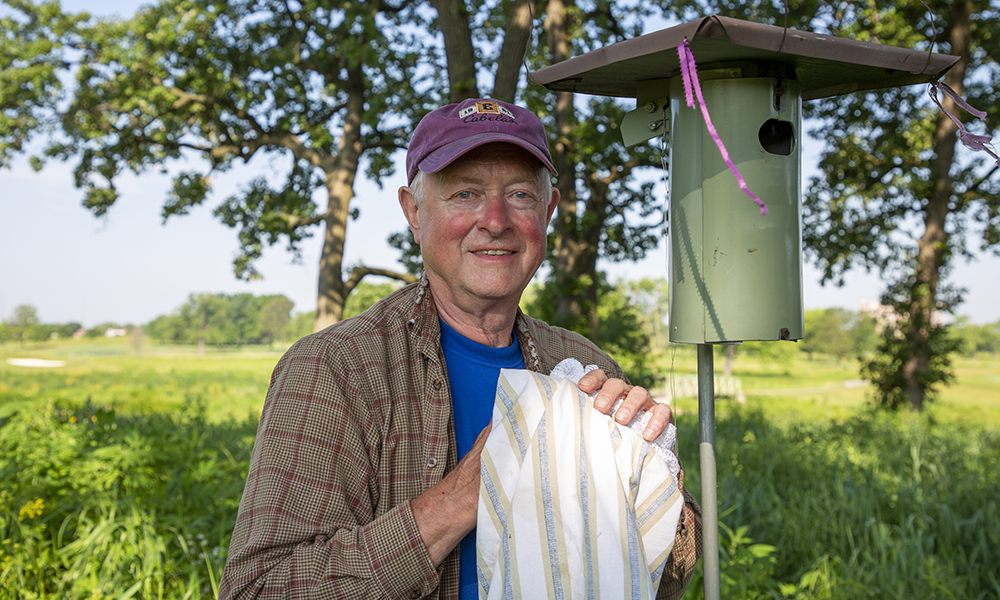
Ron Olsen spends many hours at The Preserve at Oak Meadows golf course in the summer, but he doesn’t golf.
He goes because it’s prime natural habitat (short grass and scattered trees) for bluebirds in DuPage County, Olsen explained as he putted around the grounds of The Preserve at Oak Meadows in Addison in a golf cart recently.
Olsen, 77, has been tending to 15 bluebird nesting boxes at the golf preserve for 22 years as one of the Forest Preserve District’s volunteer bluebird monitors. A retired tool and die mold maker, Olsen and his friend Frank Navratil designed and made the nesting boxes used in various DuPage forest preserves. They spent five years perfecting the boxes, tinkering with different hole sizes, heights and roof sizes to find the perfect one.
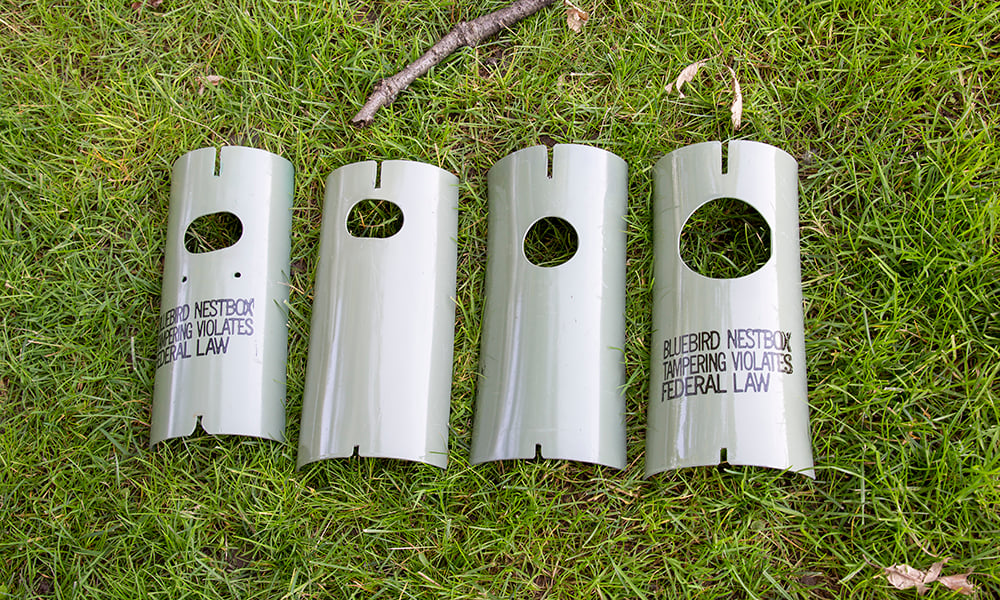
Various hole sizes were tested to determine what bluebirds prefer (it's the one on the far left).
The boxes are made of sewer pipe reshaped so it’s 5 inches in diameter “because that’s what they need,” Olsen said. He arrived at that conclusion after observing bluebirds remove 1 or 2 eggs from smaller nesting boxes. In the fall he puts duct tape over the holes to keep sparrows from moving in over the winter and getting entrenched.
On a recent July day we joined Olsen on his route, he was trying to band bluebird families. He rigged up a trapdoor inside the nesting box, connected it to a long string and waited at a distance with the other end of the string for one of the parents (preferably the male first) to go in the nesting box.
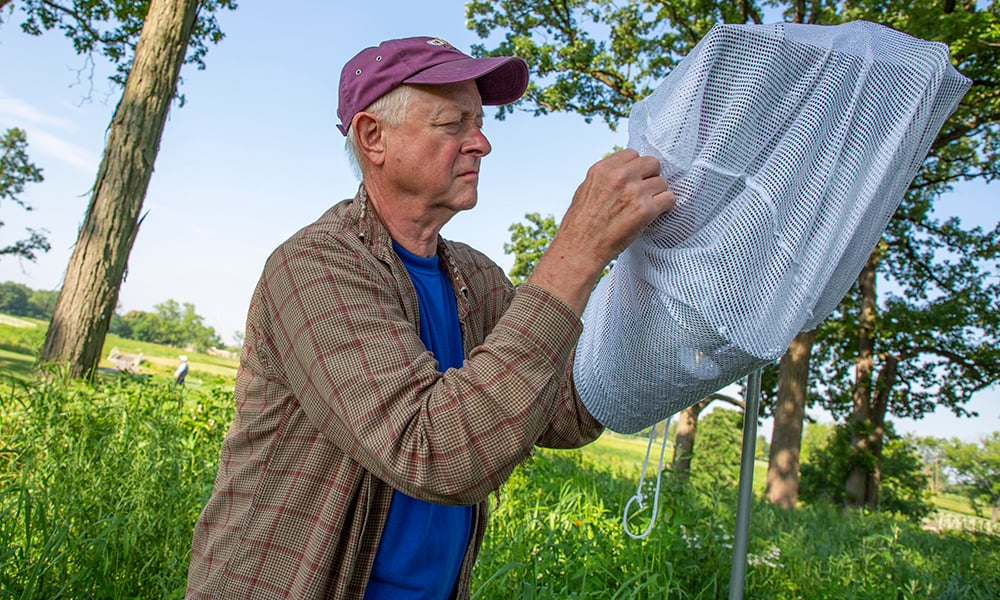
Once it did, Olsen pulled the string, shutting the trap door with the bird inside. Then he placed a soft mesh laundry bag over the box and gently removed the bird from the box. All the while the other bluebird parent angrily chirped at Olsen while closely monitoring the situation from a nearby tree perch.
Back at his golf cart, Olsen retrieved a toolbox with his banding materials and carefully placed a metal band with two rows of numbers on it around the bird’s right leg. It turned out to be the female, not the male. He measured the bird's wing from the tip of the alula (thumb) to the tip of its first primary feather and carefully noted the details in a log he keeps. He also checks for blow-fly larva bites under the bird's wings and legs before releasing them.
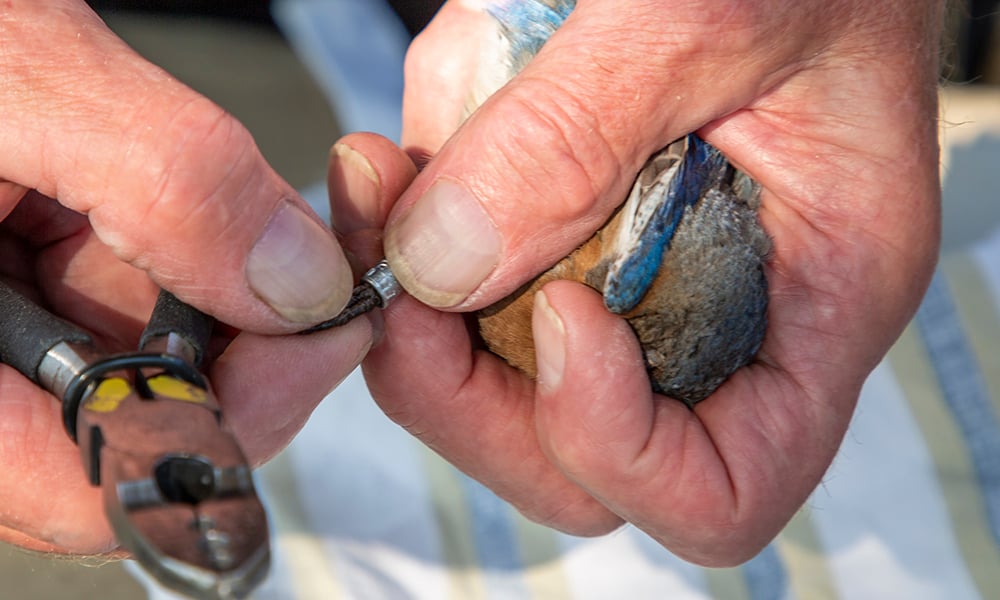
The U.S. Geological Survey analyzes data from banded birds to gain a better understanding of environmental factors that drive migratory bird populations. Bird banding provides valuable information on breeding and wintering distribution, migratory routes, survival and reproduction. Recovered bands should be reported to the National Bird Banding Laboratory at reportband.gov or 1-800-327-2263.
“So much has been learned about bluebird habits and their requirements,” Olsen said. “Just sitting and watching them is an education and helps identify their needs that can be addressed with modern solutions. They all have slightly different characteristics. They are not cookie-cutter critters.”
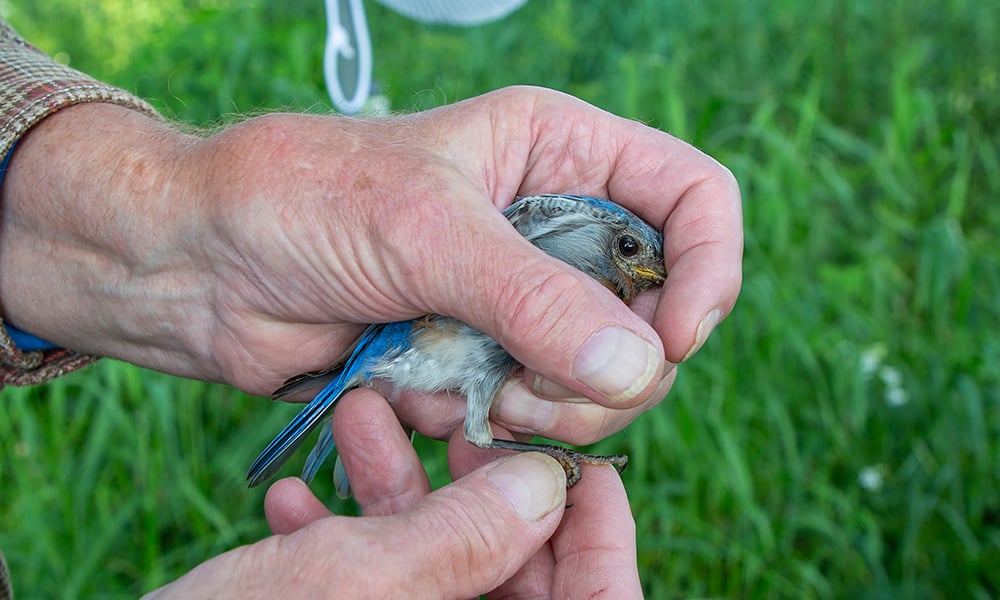
Olsen is the Forest Preserve District’s only volunteer bluebird monitor who also bands adult bluebirds. His work is part of an ongoing effort to increase bluebird populations after years of decline due to loss of nest sites and competition from swallows and house sparrows.
Olsen also helps train incoming bluebird monitors at the Forest Preserve District’s annual workshop, and many of his bluebird photos are used for training as well.
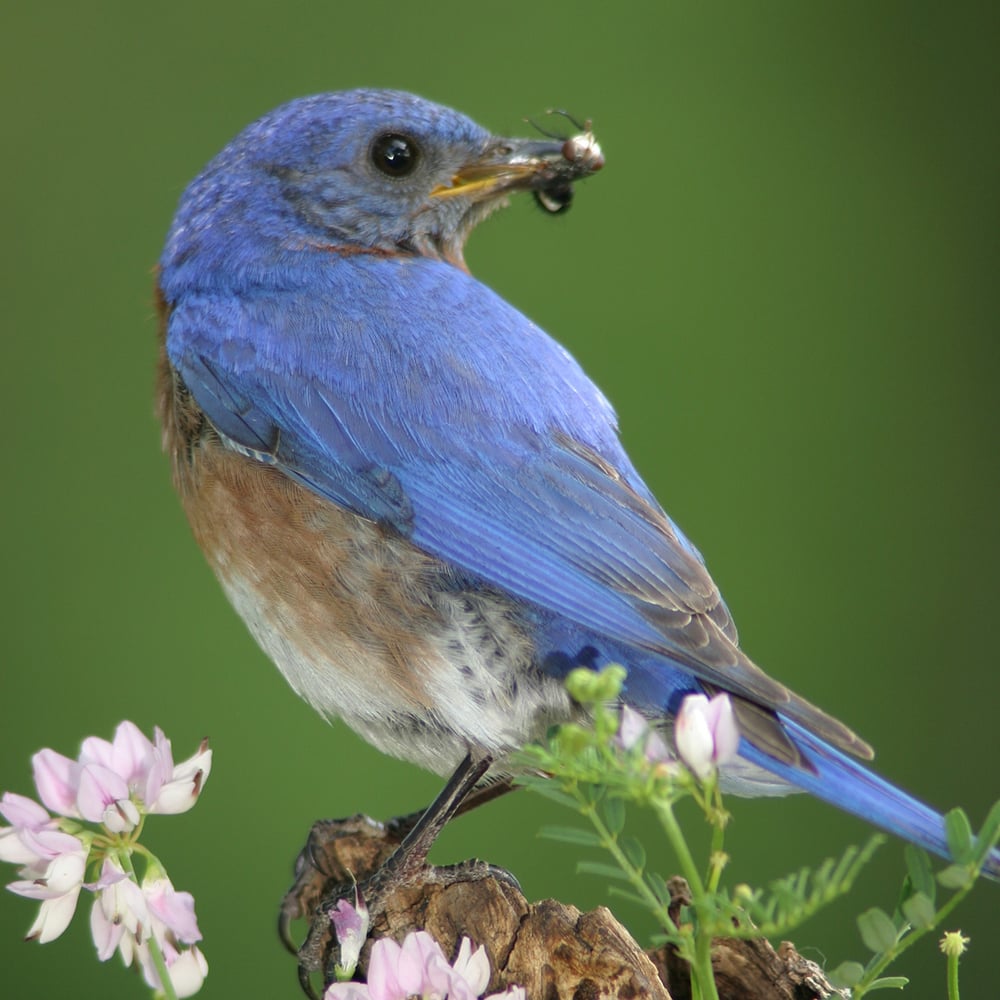
One of Ron Olsen's photos of a bluebird perching with its catch.
In 1998 with the Forest Preserve District’s blessing, Olsen started a bluebird trail at Blackwell Forest Preserve’s McKee Marsh. Married since 1963, he also keeps busy with Boy Scouts and working on his 1931 Ford.
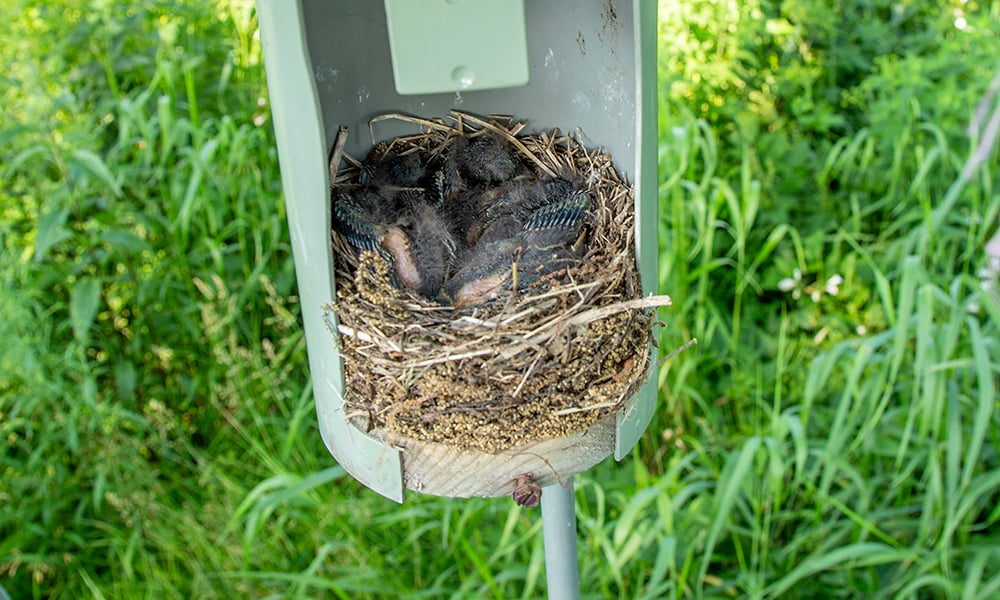
Catching the Nature Bug
“I didn’t catch the nature bug; it has been with me always, as far back as I can remember,” Olsen said. “My nature discovery started with snakes and turtles when I was 8 years old,” he said.
“I have always been interested in birds since I was able to watch them as a little boy,” Olsen said. “My grandmother encouraged me to make nest boxes and feeders.”
“My early attempts were crude compared to the bluebird houses of today,” he said. “I was excited to get my first nesting house sparrow in the city. I had no idea that they were such a threat to native cavity nesters.
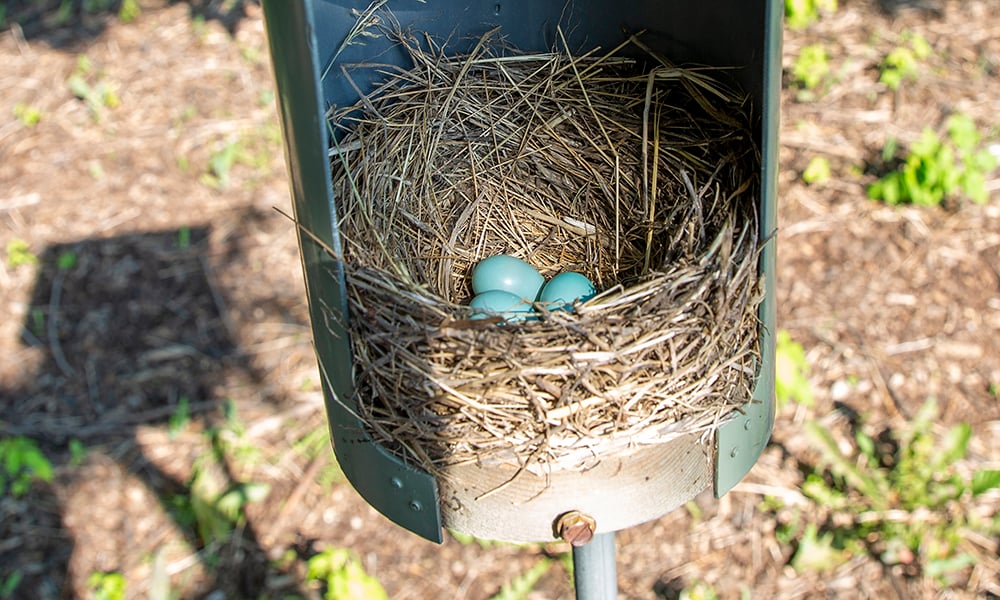
What Brings Him Back Time and Time Again
“The bluebird program has me hooked, and my involvement with a productive nest box trail at The Preserve at Oak Meadows occupies a lot of my time from April to August.”
How Nature Inspires
“The bluebird trail at McKee Marsh is my joy, but I enjoy taking bluebird pictures from a blind that are really good. I have learned many tricks to get pictures, but the main thing is having patience with the birds’ likes and dislikes. They are really smart. Banding adults and chicks is another thrilling experience.”
Advice to Others
“Get involved with a mentor and learn from his or her knowledge. Others will gladly share a lifetime of knowledge with you,” Olsen said.
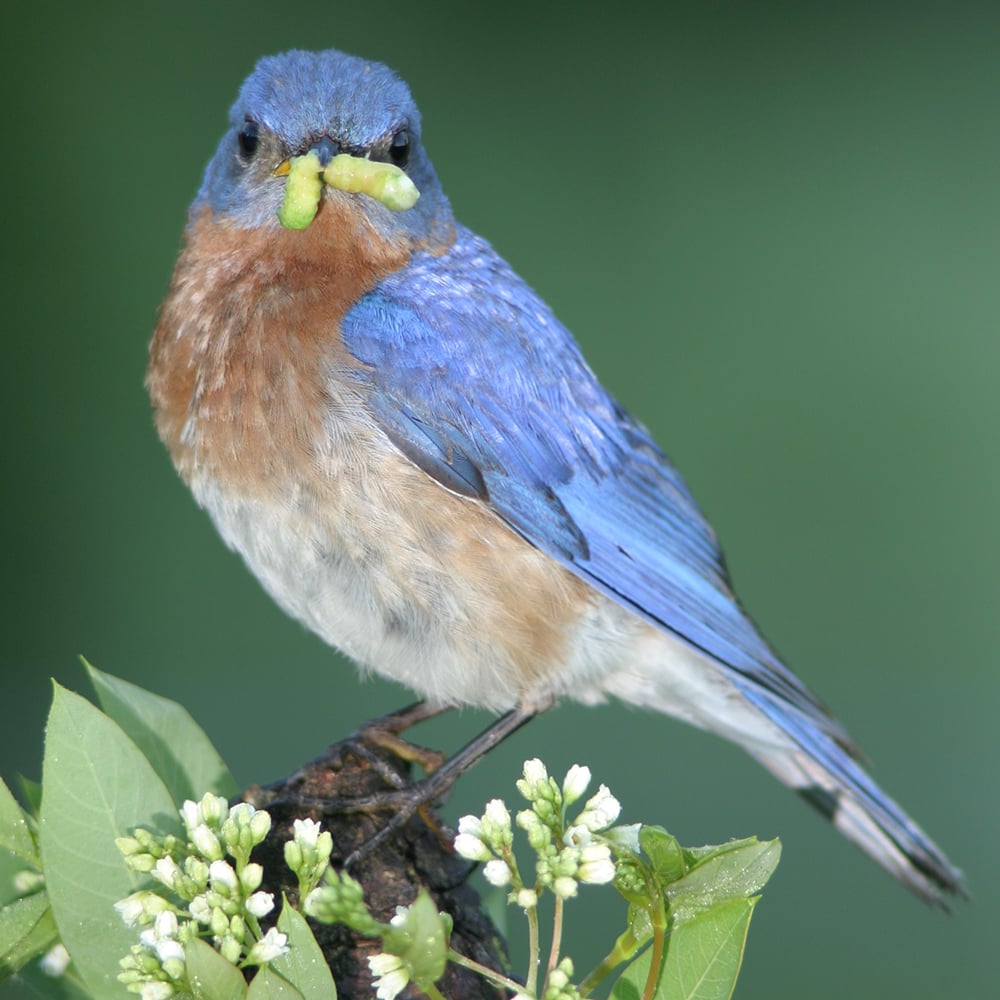
One of Ron Olsen's favorite bluebird photos: A bluebird with its catch. Photo by Ron Olsen
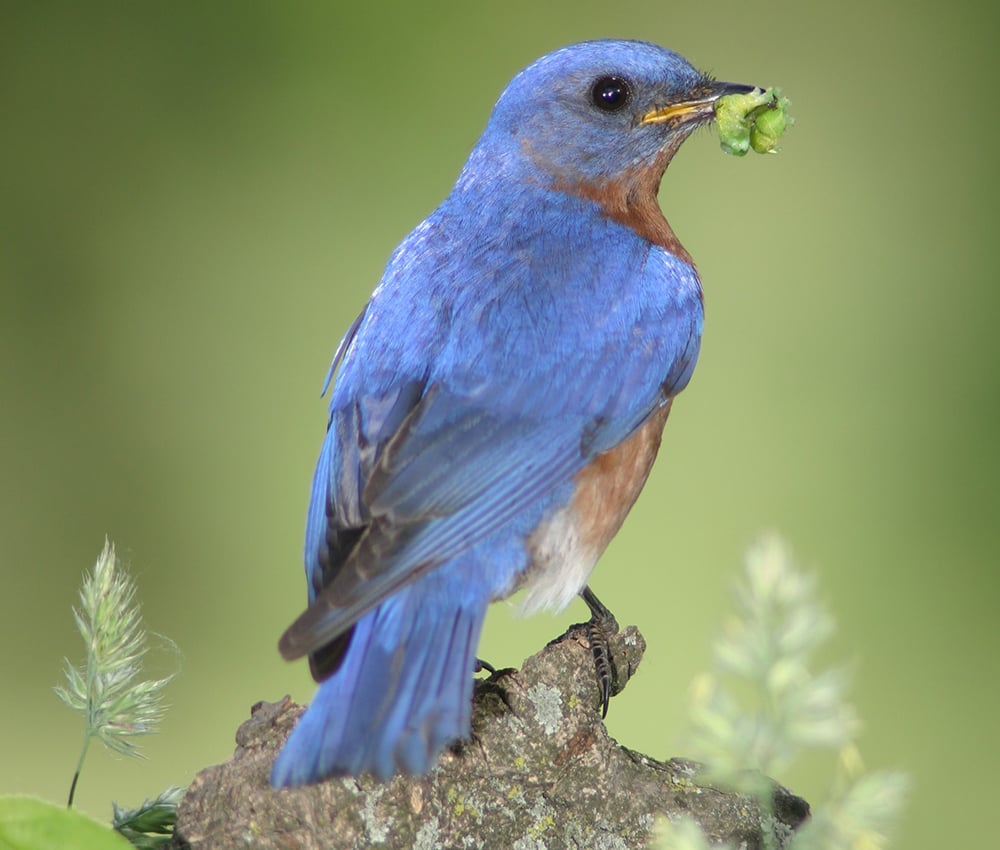
One of Ron Olsen's favorite bluebird photos: A bluebird with its catch. Photo by Ron Olsen
If you have a fun or unique way of catching nature in our preserves and would like to be featured in a “Catching Nature” blog, please contact Deb Humiston at dhumiston@dupageforest.org.